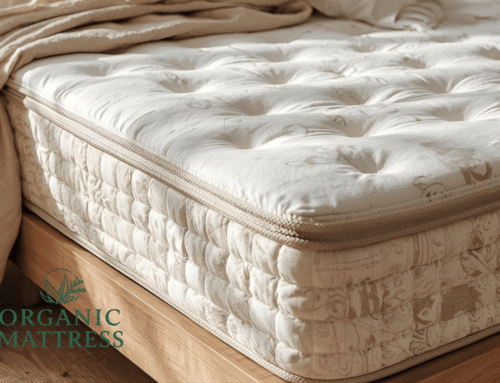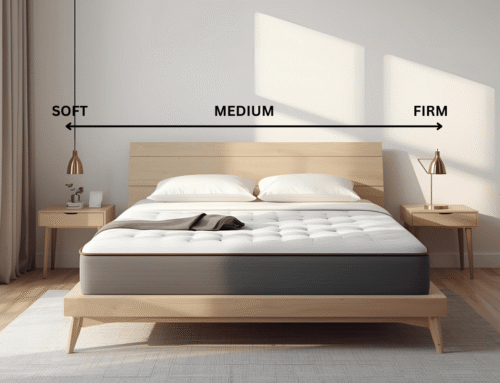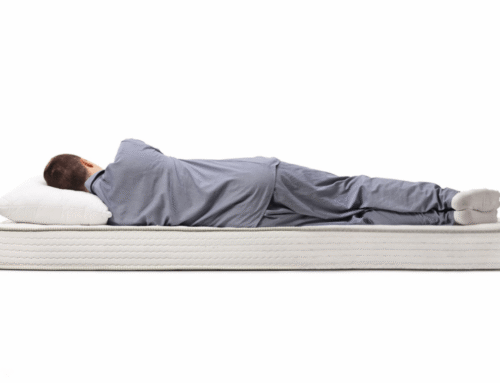Innerspring mattresses are made with metal coils, so they usually weigh more than foam ones. A twin size can weigh about 50 to 60 pounds, while a queen can reach up to 110 pounds. Some mattresses also have thick comfort layers or stronger edges, which add more weight. Heavier mattresses offer good support, but they’re harder to move. Unlike boxed foam beds, these don’t fold or compress to fit in small spaces. Most people don’t think about the weight when buying a mattress, but it’s important, especially when setting it up or changing sheets.
A strong bed frame is also important. It holds both the mattress and the people sleeping on it. Some people like heavier mattresses because they feel more stable. Others prefer lighter ones because they’re easier to carry.
The size, coil type, and extra layers all affect how heavy an innerspring mattress is. To really understand why, it helps to know what an innerspring mattress is and how it came to be.
Key Takeaways
- Innerspring mattresses usually weigh between 40 and 130 pounds, depending on size, coil design, and added comfort layers like foam or latex.
- Heavier models tend to feel more stable and hold up better over time, but they’re tougher to move, especially through stairs or narrow spaces.
- A sturdy bed frame with slats less than 3 inches apart or a solid platform is best for holding the extra weight without sagging.
- Comfort layers like high-density memory foam or latex add weight, but they also improve pressure relief and overall durability.
- Hybrid innerspring mattresses are heavier because of the added foam, while traditional models are lighter and easier to move solo.
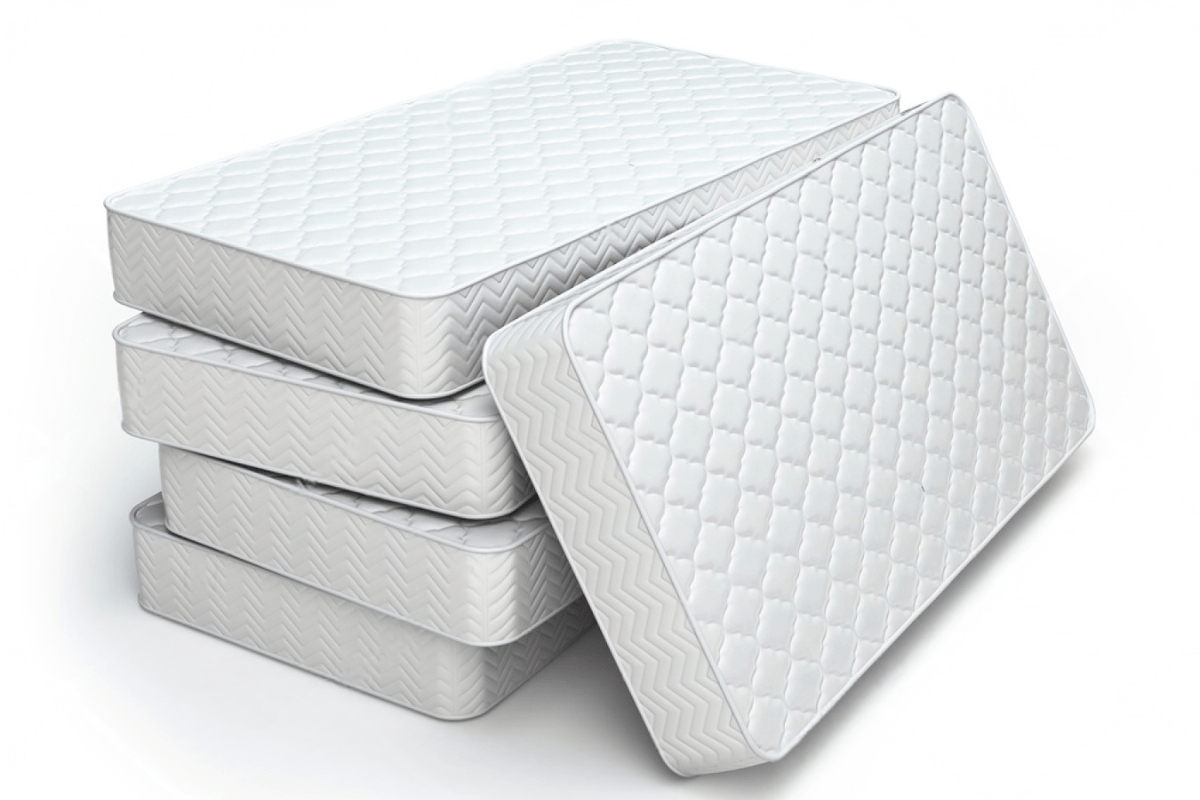
Mattress Weight By Size
Mattress weight often surprises people, especially once it’s time to move or set one up. A twin tends to weigh around 40 to 60 pounds, while a king can push well past 100. The difference becomes even more noticeable during deliveries or room changes.
Heavier options usually come from thicker materials like extra foam layers, dense coils, or reinforced edges. Those features may add comfort, though they also make the mattress harder to lift or rotate. A queen, for example, can range from 70 to 90 pounds depending on construction.
Online product pages usually list weight in the specs, but it’s not always front and center. It’s smart to dig a little, especially for anyone planning to carry the box inside or set it up alone. Twin and full sizes feel more manageable, but queens and kings often need two sets of hands.
What Affects Innerspring Mattress Weight?
The weight of an innerspring mattress isn’t just about its size. What’s inside matters, too. A twin and a king don’t just differ in width and length, they also have different amounts of material inside. Thicker mattresses and extra features can make them heavier than expected, especially if you’re moving one alone.
Most of the weight comes from the coils. Older Bonnell coils are heavier than pocket coils, even though both do the same job. Mattresses with more coils usually offer more support, but they also weigh more. If the coils are made from thicker steel, that adds to the weight, too.
The top layers also play a role. Materials like memory foam and latex feel soft and supportive, but they’re dense. That means more weight. Hybrid mattresses, which mix foam and springs, are often heavier than mattresses made only of foam even if they’re the same height or firmness.
Impact Of Comfort Layers
Comfort layers on innerspring mattresses usually include memory foam, latex, or gel. These materials are there to soften the feel of the springs, but they also bring extra bulk. It’s easy to overlook how much those added layers contribute to a mattress’s overall weight.
High-density memory foam weighs the most out of all the materials. Latex feels responsive and long-lasting, though it’s naturally heavy. A few extra inches of foam can quickly add 15 to 25 pounds, which feels noticeable during a move or flip.
For those surprised by how heavy an innerspring mattress feels, the top layers probably explain it. It’s not just the coils doing the lifting, it’s the comfort materials stacked above. That added cushion does help with pressure relief, though handling the mattress can become more of a chore. In addition to comfort layers, the number of coils and the coil count significantly influence an innerspring mattress’s overall weight.
To better understand your options, it helps to know how innerspring mattresses compare with memory foam and pocket coil designs, and the difference between hybrid mattresses and traditional innerspring models, which guides you in choosing the right mattress for your needs.

Hybrid vs Traditional Innerspring Mattresses
Hybrid mattresses mix springs with memory foam or latex. They’re usually softer and give better support than regular spring beds. But they’re also heavier, especially in queen or king sizes. You’ll notice the weight if you need to move or rotate the mattress.
Traditional innerspring mattresses are lighter. A queen size is often around 70 to 80 pounds. Some people like these because they’re easier to lift, flip, or move without needing help or hurting your back.
Other people don’t mind the extra weight of hybrids, especially if they need better support or want less motion when someone moves in bed. Once the mattress is in place, the weight isn’t a big deal. But if you live in a walk-up or like to rearrange furniture often, a lighter innerspring might make more sense.
Weight Considerations For Bed Frames
Not all bed frames are suitable with the weight of an innerspring mattress, especially those with extra padding or thick pillow tops. Some people notice creaks or dips in the middle after only a few months because the frame couldn’t handle the weight. A weak base doesn’t just affect comfort, but it can also shorten the mattress’s lifespan, too.
Frames with slats spaced too far apart tend to sag faster under innerspring mattresses. Solid platform beds or those with sturdy wood slats less than 3 inches apart feel more stable and last longer. Metal frames with central support bars also work well for heavier mattress styles.
Before buying a new innerspring mattress, it’s worth double-checking the frame’s weight capacity. Some older or minimalist-style frames look nice but buckle easily under pressure. Even with a warranty, constant squeaks or a sinking middle can be frustrating to deal with every night.
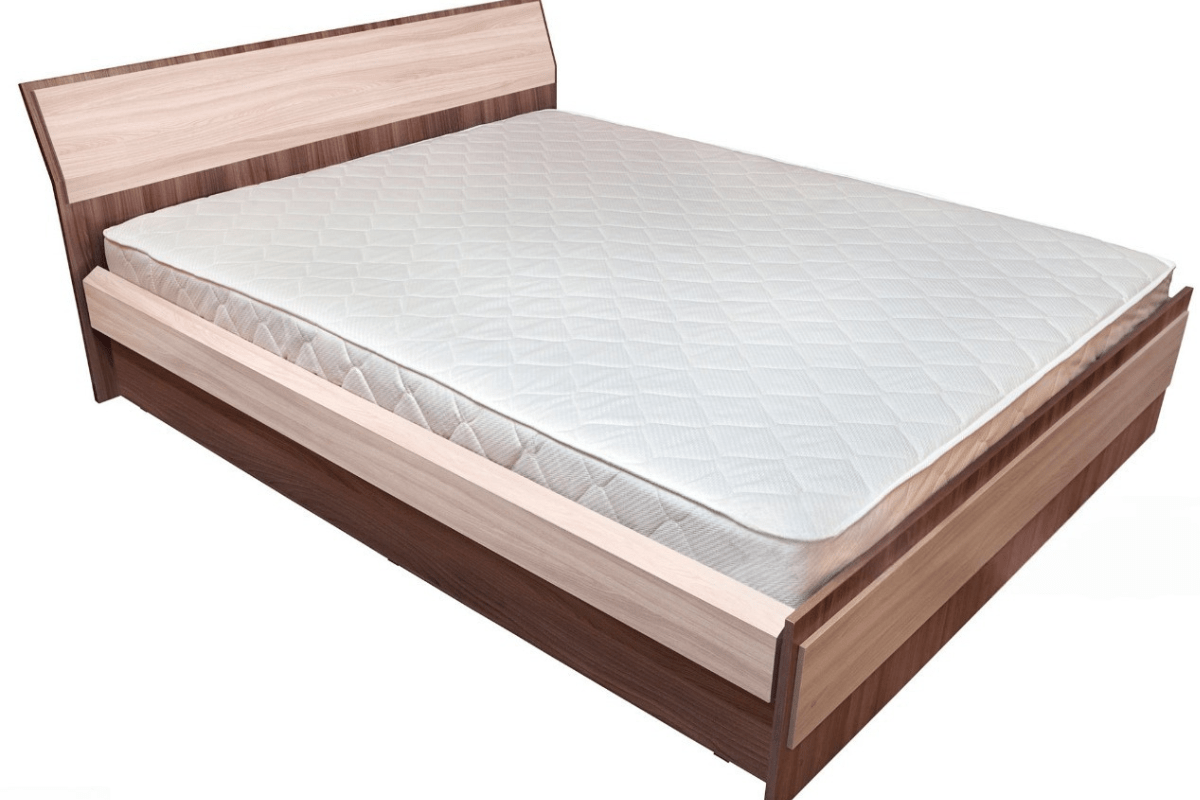
Do Materials Affect Mattress Weight?
Mattress weight often depends on the materials. Innerspring mattresses are heavier when they use thicker-gauge coils or have a higher coil count. The steel adds noticeable weight, especially in queen and king sizes, and moving them around can feel like a full workout.
Memory foam layers, which are sometimes added for comfort, also pile on extra pounds. While they offer pressure relief, that dense material contributes a lot to the overall weight. Latex is even heavier. It’s more durable, but not ideal for anyone who needs to move or rotate the mattress often.
On the other end, polyfoam is much lighter and shows up more in cheaper or thinner models. It’s not as durable, though, and often wears out faster. So while lightweight materials sound convenient, a heavier innerspring with better coils might feel more solid and supportive in the long run.
Can One Person Move An Innerspring Mattress?
Moving an innerspring mattress alone is doable, but it depends on the size and how much padding it has. A twin or full-size mattress feels manageable for one person, though it still takes effort. The coils inside add weight, especially in models with thicker comfort layers. It’s important to know how often you should turn an innerspring mattress and whether one person can handle moving it.
Larger sizes like queen or king feel bulky and awkward to maneuver, even with handles. Dragging one through narrow hallways or around corners can turn into a workout. Some people use moving straps or a dolly just to make the process less frustrating.
Asking a friend to help is better than risking back pain. Some opt for professional delivery services with setup included, especially for heavy mattresses. Innerspring designs with reinforced edges or extra cushioning often weigh more than expected.
Do You Need Help Moving A Heavy Mattress?
Moving a heavy innerspring mattress, especially queen or king sizes, is tough. Most of them weigh over 90 pounds, so you’ll need help. One thing that makes it easier is a mattress bag with handles. It protects the mattress and gives you something to grip while carrying. Don’t fold the mattress. Innerspring types usually can’t handle bending and might get damaged.
If you’re moving through stairs or tight spaces, a shoulder dolly or hand truck can help. These tools make the weight feel lighter and put less pressure on your back. But even with the right tools, this kind of move usually needs two people. Trying to do it alone can lead to injury or damage.
If you’re not sure you can handle it, it’s okay to ask for help. Hiring movers is often the safer choice. Some stores also offer delivery and setup, and they’ll take away the old mattress too. Planning ahead and having support makes the whole process easier and safer.
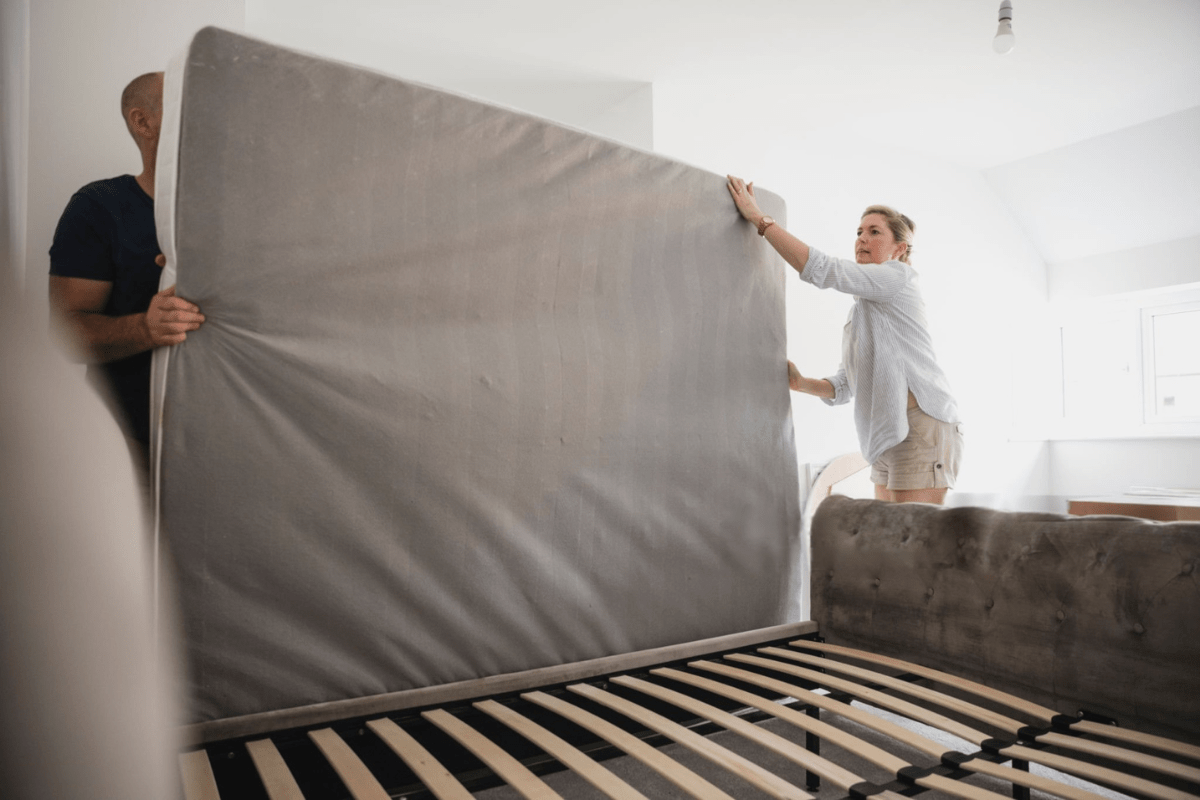
Do Heavier Mattresses Last Longer?
Heavier innerspring mattresses have stronger coils and thicker layers of comfort foam, which contributes to their overall durability. The extra weight usually reflects a more substantial build quality and offers better support and longevity compared to lighter models.
Still, weight alone doesn’t guarantee a mattress will last longer. The quality of materials and the construction process play a crucial role, and some lighter mattresses use advanced foams or coil systems that hold up just as well over time. It’s important to look beyond just how heavy the mattress feels.
Innerspring mattresses that combine solid coil design with durable foams generally stand the test of time better than those relying mostly on weight. Warranty terms and customer reviews can provide additional insight into how a mattress performs in real life, including how long an innerspring mattress lasts and how to pick the best innerspring mattress.
Final Thoughts
How heavy an innerspring mattress is depends on its size, the number of coils inside, and how much extra padding it has. Most of them weigh somewhere between 40 and 130 pounds. Bigger ones and hybrid types are usually heavier. Heavier mattresses often feel firmer and last longer. Lighter ones are easier to move around.
But weight isn’t the only thing to think about when choosing a mattress. You also need to consider how often you’ll move it, how much the person using it weighs, and how strong the bed frame is. If you live in a place with stairs or narrow hallways, planning ahead helps avoid trouble later on.
Knowing how mattress weight affects comfort and setup can help you pick one that fits your needs. It makes sleep more comfortable and helps you avoid surprises when it’s time to move or adjust it.

